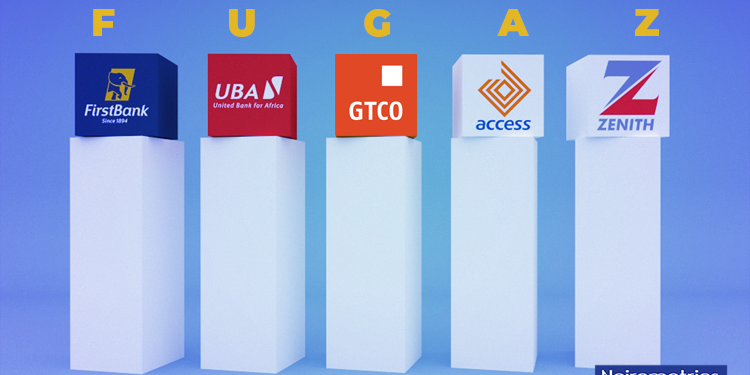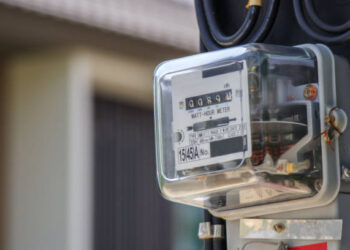Access Holdings Plc emerged as the clear leader among Nigeria’s tier-1 banks in electronic business income for the first half of 2025, generating N101.65 billion from digital transactions.
Collectively, the five tier-1 lenders comprising Access Holdings, United Bank for Africa (UBA), Zenith Bank, GTCO, and FBN Holdings earned N290.86 billion in e-business income during the period, representing a 2.2% year-on-year decline from the N297.53 billion recorded in the same period of 2024.
However, for Access Holdings, the N101.65 billion electronic channels revenue represents a 37.7% increase compared with the N73.81 billion in the corresponding period of 2024.
For the banks, e-business income represents revenue from electronic channels, card products, and related services. These channels include mobile applications, USSD channels, automated teller machines (ATMs), agency banking, internet banking, and point of sales (POS) payments.
UBA, Zenith, FBN, and GTCO see revenue drop
Despite their overall improved performance for the period under review, UBA, Zenith Bank, FBN Holdings, and GTCO, all strong players in electronic banking, reported a notable decline in e-business revenue.
- UBA ‘s e-business earnings for the half-year was close to Access Holdings’ at N100.50 billion. However, this represents a 5.3% decline for the bank, which recorded N106.15 billion in the previous year.
- Zenith Bank’s e-business income fell 11.7% year-on-year to N36.40 billion from N41.23 billion.
- GTCO’s e-business revenue also declined by 12%, from N32.50 billion in 2024 to N28.61 billion in 2025.
- FBN Holdings saw the sharpest 45.9% decline to N23.69 billion from N43.83 billion, reflecting weaker transaction volumes and possible migration to alternative channels.
What other banks earned
Meanwhile, a look at the financials of other banks also revealed a mix of growth and decline in revenue. Sterling Financial Holding Company, for instance, grew its electronic transactions income by 2.7% from N4.66 billion in half-year 2024 to N4.79 billion in 2025.
Stanbic IBTC also recorded a slight increase in electronic transaction revenue as it generated N2.25 billion in 2025 compared with the N2.15 billion recorded last year.
However, for Wema Bank, which recorded the largest e-business revenue among the tier-2 banks, it was a decline. The lender’s e-business revenue for the half-year stood at N8.5 billion, a 59% decline from N20.9 billion recorded in the same period last year.
Tier-1 banks’ IT spending
A look at the operating expenses of the tier-1 banks shows that they also increased their spending in ramping up their IT infrastructure in the year.
While many of the banks had embarked on core banking platform upgrades towards the end of last year, the IT capacity enhancements continue into this year, with many of the banks periodically announcing service disruptions for ‘maintenance’.
- Expectedly, Access Holdings, which made the biggest money from electronic channels, has been the biggest spender on IT among the banks so far this year.
- According to its financial results, the lender spent N69.4 billion on IT in the first half of the year. This was, however, a decline in spending compared with the N111.2 billion the bank splurged on tech in the same period last year.
- Zenith Bank more than doubled its IT spending in the first half, with N49.88 billion committed to technology compared with N23.09 billion outlay in the same period last year.
- GTCO followed with N37.76 billion, slightly higher than its N36.60 billion spend in H1 2024, while UBA maintained near-flat spending at N6.72 billion versus N6.70 billion in the prior period.
E-payment growth
The growth in e-business income for the banks is driven by the increasing popularity of mobile and online banking in Nigeria.
As more and more people use these channels to access financial services, banks are seeing a corresponding increase in revenue.
Despite the decline in e-business revenue for some of the banks, analysts said more Nigerians are embracing electronic payments, adding that the decline could mean the banks’ customers are switching to alternative channels, such as those provided by fintechs.
According to the CEO of Chronis Technology, Mr Kayode Joseph, the growth in e-business revenue for the banks is an indication that the Central Bank of Nigeria’s (CBN) cashless policy is having positive effects, not only on the banks but also on Nigerians.
“Where you see a decline in e-business for a bank, it can only mean that their customers are using alternative service providers because more Nigerians are embracing electronic payment, and there is no going back on that,” he said.
“When it comes to e-banking or digital financial services, Nigerians are now spoilt for choice. That is why you will see some Nigerians keep their main cash in a traditional bank and they will be using multiple fintechs for regular transactions,” he added.
“Many Nigerians are now finding electronic transactions more convenient, and I think this is the impact of the CBN’s cashless policy, which has limited the amount of cash that can be withdrawn in a day. This is a positive sign for the Nigerian banking sector,” he said.
He, however, noted that the banks will need to invest more in their infrastructure to address the issues of failed transactions and secure their systems against fraud.
“Two factors that are still discouraging some Nigerians from using banks’ electronic channels are the issue of failed transactions or network problems and electronic transaction fraud. If the bank can invest more in technology to deliver seamless transactions and secure their networks, they will see more growth in their e-business revenue,” he added.
What you should know
The latest data released by the Nigeria Inter-Bank Settlement System (NIBSS) revealed that electronic payment transactions in Nigeria rose to N284.9 trillion in the first quarter of 2025 as more Nigerians go cashless.
The value recorded on the NIBSS Instant Payment (NIP) represents a 22% increase over the N234.4 trillion transactions recorded in Q1 2024.
The NIP is an account-number-based, online real-time Inter-Bank payment solution developed in the year 2011 by NIBSS, and it facilitates transactions across multiple electronic channels, including internet banking, mobile apps, Unstructured Supplementary Service Data (USSD), POS, ATM, among others.





















